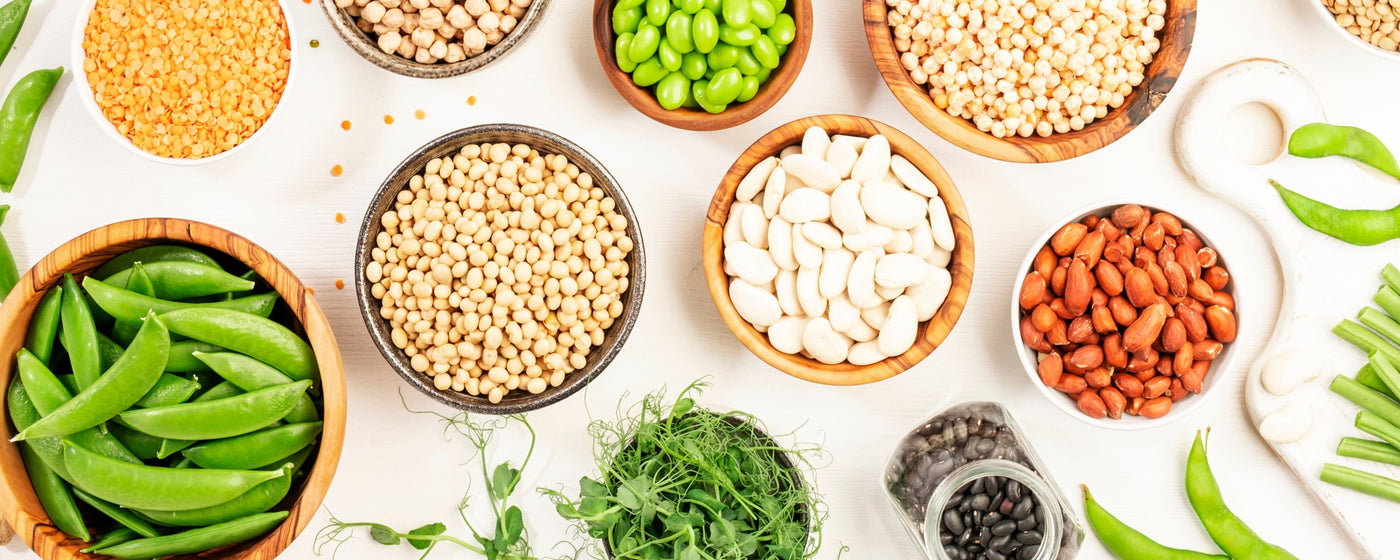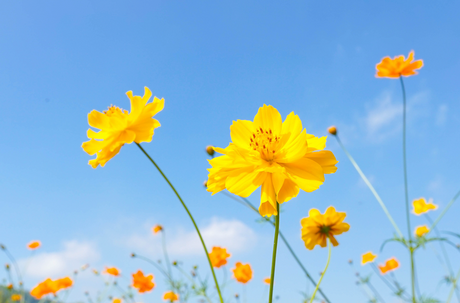When you put mulch on your soil, you are deliberately putting on something intended to discourage plant growth. Mulches do this by blocking light (which penetrates the soil and encourages weeds to grow) and by physically preventing weeds from coming out of the ground. You want them to do this for as long as possible, or at least as long as you have a crop in the ground that you want to protect from weeds.
As a result, a good mulch material should be:
- Capable of blocking light and weeds (so it does a good job of blocking downward movement of light and upward movement of growing weeds)
- Durable (so it can continue doing its job for several months or more, even when exposed to heat, light, and moisture; one aspect of durability has to do with how many nutrients there are in the material – materials that are low in nutrients tend to make good mulches because they do not encourage weeds by releasing nutrients and are not themselves eaten quickly by microorganisms).
More obviously, a good mulch material should also be readily available, affordable, easy to use, and easy to dispose.
A partial list of possible mulches and their benefits and drawbacks:
1. Plastic Mulch
What it is plastic mulch? Key features:
Big sheets of plastic. Plastic mulch has a number of benefits that other mulches do not -- in particular, the heat it traps can speed plant growth throughout the growing season, and especially during the cool weather at the beginning and end of the garden season (see season extension techniques for a discussion of this). It is also very, very effective at keeping down weeds. Unfortunately, you have to buy it, you cannot incorporate it into the soil (so it offers no long-term benefit to soil quality), and you have to throw it away, after which it will spend forever taking up space in a landfill.
Weed/light blocking capability:
Excellent (buy plastic you cannot see through at all).
Durability:
Will last a whole growing season.
Availability:
Special agricultural plastic is available at many garden stores or through mail/internet companies in rolls or folded sheets. If you cannot find this, you can buy large sheets of plastic at any hardware store, though this plastic can be unnecessarily heavy.
Cost:
Moderately expensive – buying a big roll or sheet can be cost-effective, because you can use small pieces of it over time.
Ease of use and disposal:
Not too complicated, but not as simple as most other mulches. See laying and removing plastic mulch for tips on how to use this material. Should NOT be incorporated into the soil at the end of the growing season, but must be pulled up and thrown away.
2. Landscape Fabric
What it is Landscape Fabric? Key features:
Large sheets made up of plastic strips woven together. Unlike plastic mulch, landscape fabric lets air and water through to the soil while also providing the benefit of warming the soil. Because it lasts for multiple years, it can be very helpful in growing perennial herbs, fruits, and vegetables, but it is too expensive for most growers to use on a large scale.
Weed/light blocking capability:
Excellent.
Durability:
Will last multiple years if cared for properly.
Availability:
Landscape fabric is available at many garden stores and through mail/internet retailers in rolls or
folded sheets.
Cost:
Quite expensive.
Ease of use and disposal:
Not too complicated, but not as simple as most other mulches. See laying and removing plastic mulch and season extension techniques for tips on using this material. Can be used for multiple years, either left in one place in the garden or moved around. When it begins to fall apart, the fabric should NOT be incorporated into the soil, but must be pulled up and thrown away.
3. Newspaper
What it is it? Key features:
It’s newspaper, either shredded or in large sheets (large sheets make for better mulch). Avoid colorful, shiny paper. Newspaper ink used to contain lead, but this is no longer the case in the United States. Do avoid colorful, shiny newspaper, as this can contain harmful compounds.
Weed/light blocking capability:
Good, especially if paired with another mulch (see “ease of use” below).
Durability:
Good.
Availability:
Easily available – collect it yourself or go to a nearby recycling facility.
Cost:
Little or none.
Ease of use and disposal:
Newspaper is very easy to use. After preparing a bed for planting, lay newspaper down on the bed 6-8 sheets deep, watering it to fit it to the soil. You can put a little bit of soil on top here and there to hold the newspaper down, or you can put on a layer of another mulch like leaves or straw (the combination of newspaper and straw or leaves can be almost effective as plastic, and is also biodegradable). Cut holes through the newspaper to put in plants. Newspaper can be incorporated into the soil at the end of the growing season.
4. Cardboard
What it is it? Key features:
Brown, thick, corrugated cardboard, used in shipping and packing boxes. Avoid colorful, thin cardboard used for cereal boxes and other food packaging. Cardboard is very good at blocking weeds and is more durable than most other biodegradable mulches. If you have problem weeds like Canada thistles (see weeds) and you do not want to use plastic mulch to keep them under control, cardboard may help you. Apply several offset layers of cardboard so no soil is exposed.
Weed/light blocking capability:
Excellent.
Durability:
Very Good.
Availability:
Readily available. Collect it yourself from boxes you use, or visit a recycling facility nearby. Many businesses will also be happy to have you take away some of their cardboard.
Cost:
Little or none.
Ease of use and disposal:
Cardboard is pretty easy to use. Wet the cardboard (it takes a while to absorb water), prepare a bed for planting, and arrange the cardboard over the bed, using small amounts of soil to hold the cardboard down. When the cardboard is new, it can be hard to make it fit to the shape of your beds – keep wetting it and it will flatten out eventually. Over time, the cardboard will get soft and ragged and can be incorporated into the soil at the end of the growing season.
5. Leaves
What it is it? Key features:
Dried leaves collected in the fall, either whole or shredded. Leaves are one of the most widely available mulches, and when applied thickly (about 15 cm/6 in deep – more if you have them), they will keep down weeds for much of the growing season. Water the leaves after applying them to keep them from blowing away.
Weed/light blocking capability:
Good.
Durability:
Good.
Availability:
Good – either collect your own (if you have a yard), or collect them from homeowners who put them in bags. Many cities and towns also have facilities where you can pick up leaves for free.
Cost:
Free.
Ease of use and disposal:
Leaves are easy to move around and spread on beds, at least when they are dry. Wet leaves can be very heavy. Leaves can be incorporated into the soil at the end of the growing season
6. Straw
What it is it? Key features:
Cut, dried stems of wheat, oats, or other grains. One of the reasons to use straw in some situations is that it is not quite so dense as most other mulches, even when wet. As a result, it can be used to protect overwintering crops like garlic, which are able to grow up through the mulch in the spring. If you tried to use leaves for the same purpose, they would mat down such that you had to move them away from the garlic plants to let the plants grow out of the soil. The fact that straw is less dense than leaves or cardboard also means that some weeds can come up through it, but many fewer than if you did not mulch at all. When you apply straw, break it up from the tight sheets that it tends to form. Apply straw as thickly as you can – at least 12 cm (5 in) of loose straw if possible. Water the straw after applying it to keep it from blowing away. Straw can be incorporated into the soil at the end of the growing season. DO NOT confuse straw with hay when buying mulch. Both hay and straw are dry when you get them, but when hay was cut it was wet and green. As a result, it is nutrient-rich, and it will tend to rot (and smell bad) instead of serving as a good mulch.
Weed/light blocking capability:
Low to medium (sometimes this is a good thing)
Durability:
Medium – tends to pack down and can blow away in strong winds. May need to add more straw through the season if it is your only mulch.
Availability:
Unless you are a farmer, straw must be purchased at a farm, garden store, or hardware center.
Cost:
A bale of straw about 90 cm x 46 cm x 36 cm (36 in x 18 in x 14 in) can cost anywhere from $3 to $8. If suppliers are asking more than that, you might want to try another kind of mulch.
Ease of use and disposal:
Straw can be incorporated into the soil at the end of the growing season.
7. Grass Clippings
What it is it? Key features:
Dried, cut grass. Any grass you use should be completely dry and brown. DO NOT use green, freshly cut grass. Like hay (discussed with straw, above), grass is usually cut when it is green, wet, and rich in nutrients. Wet grass, and dry grass that is still green, is better used to make compost or another soil amendment than mulch. If you are thinking about using grass clippings for mulch, make sure that the lawns they come from have not been treated with toxic chemicals. Unfortunately, many homeowners use pesticides and herbicides on their lawns that last on grass clippings for a long time.
Weed/light blocking capability:
Good.
Durability:
Not great – grass tends to break down fairly quickly because the stems are thin and there are
enough nutrients for soil organisms to eat the grass. You may need to add mulch multiple times through the
season to keep weeds down.
Availability:
Depends – must be dry and chemical free. If you can produce your own, good. If not, be careful about where you get them. Some cities and towns collect these and give them out for free.
Cost:
Free.
Ease of use and disposal:
Very simple to use – one of the easiest mulches to spread around plants. Breaks down quickly, and can be incorporated into the soil at the end of the growing season.
There are many, many other materials you could use for mulching, including cocoa bean hulls (a by-product of chocolate production), corn cobs, and pine needles.
Materials NOT to use as mulch
There are also some materials you should not use as mulch, or at least not in certain places. While they do keep down weeds, woodchips, sawdust, and bark chips all contain a protein called lignin, which lasts for hundreds of years in the soil and sucks up nutrients that would otherwise be available to your plants. Generally, these materials should not be used as mulch in any bed where you are growing annual vegetables, herbs, flowers, or fruits. If you have permanent paths or plantings of trees around your garden, these woody materials can be used for mulch in these locations. Other materials like manure (from cows, horses, pigs, etc.) are much too nutrient-rich for mulch and are better used as fertilizer or soil amendments.















































